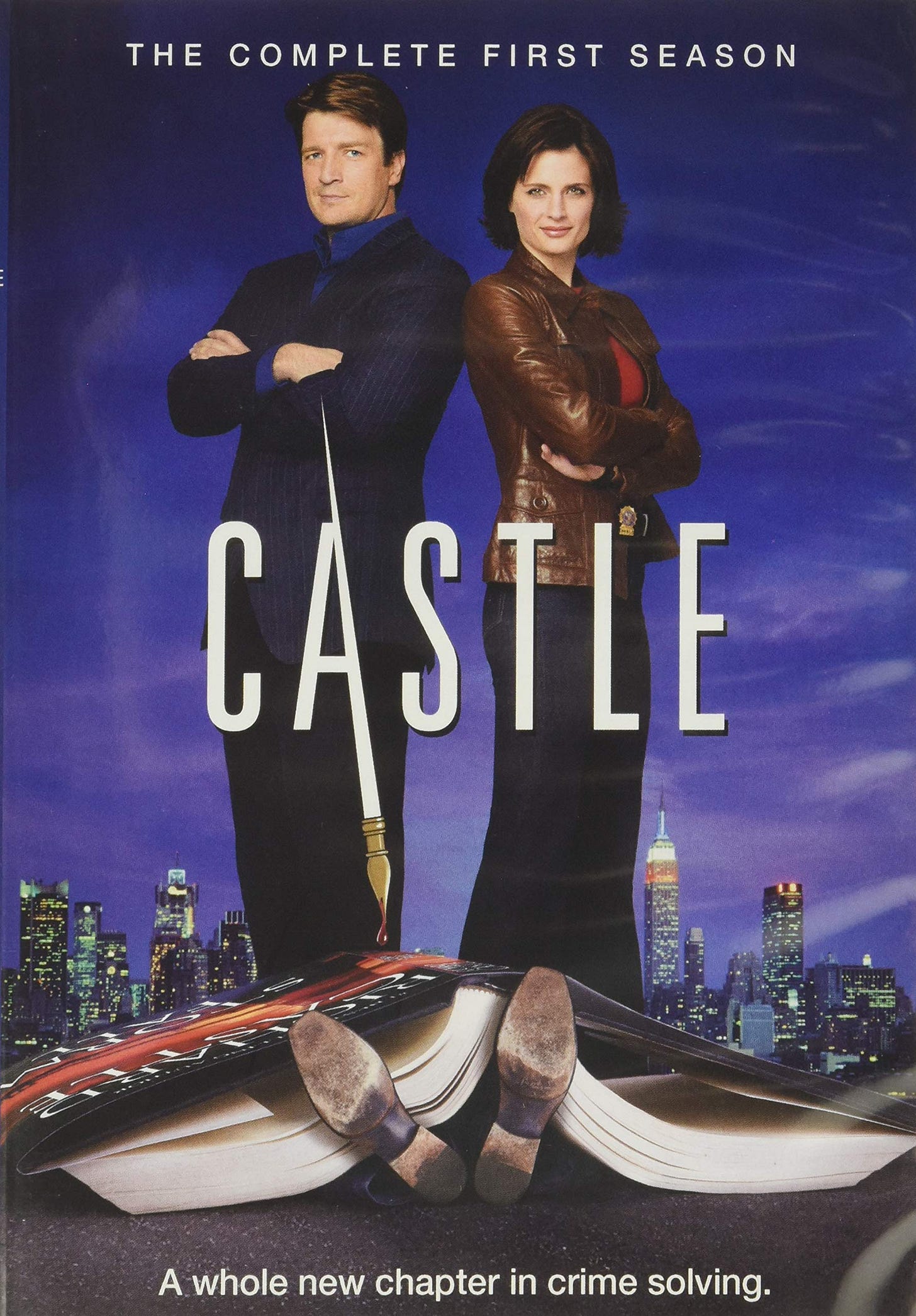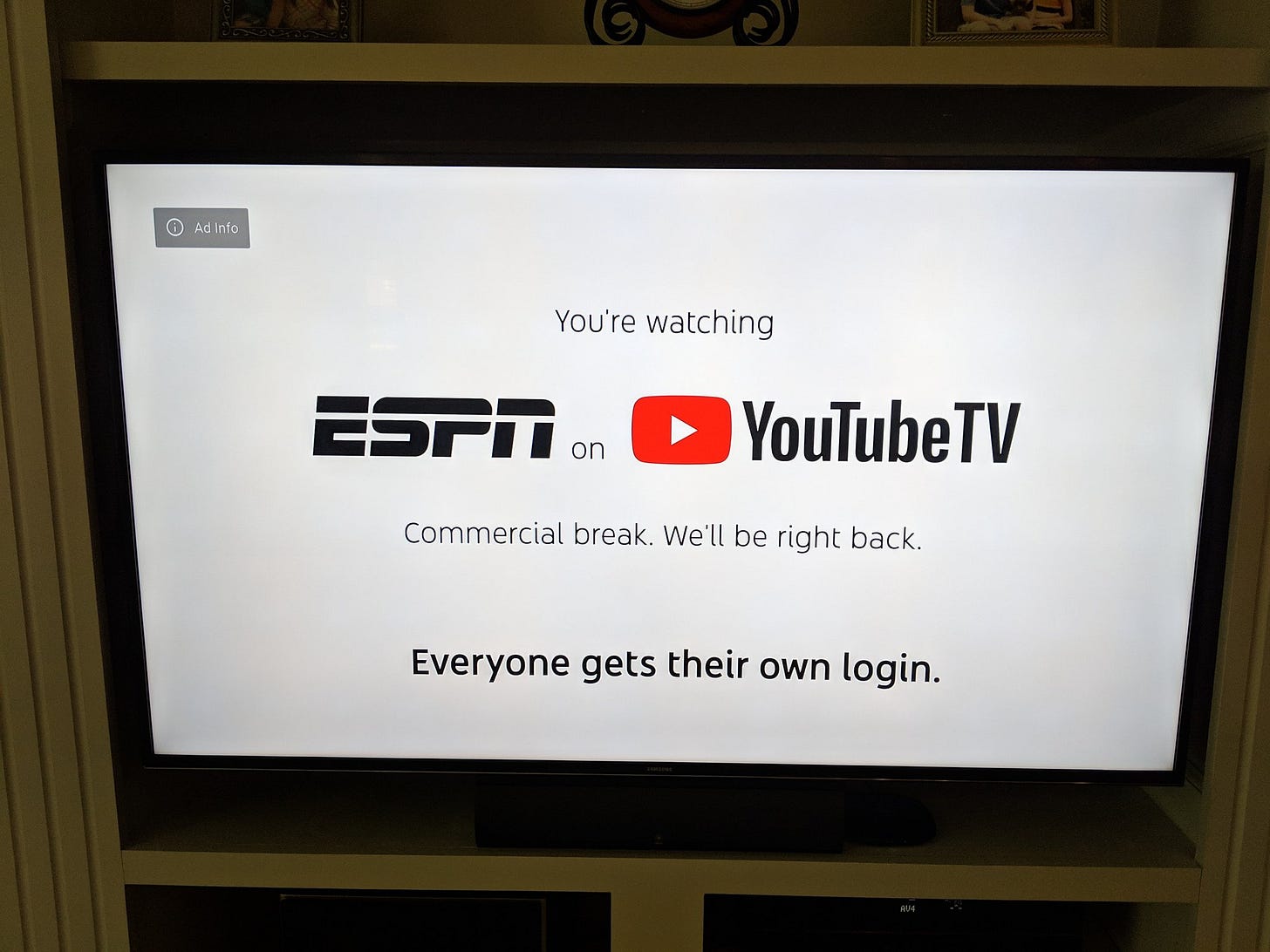Marketing Saturation: When Too Much is Too Much
Unprompted Brand Awareness can also be a negative
Breaching the Castle Walls
My wife and I have been watching a lot of Castle on Amazon Prime Video. It’s aged well and I like Nathan Fillion (RIP Firefly).
It's become our go-to show.
It’s a mix of crime solving and attractive actors1 that makes for a perfect turn-your-brain-off content.
But—beyond a love of literary loss of life—we’ve also developed an (ir)rational frustration with Volkswagen and Apple.
No, they didn’t flub a line in a big marketing campaign.
They just advertised too much, too frequently.
Amazon Prime Video’s ad ecosystem seems to be in its early stages, and it shows.
Instead of serving a well-rounded mix of ads, it has a strange habit of showing the same ad over and over (and over).
Sometimes, we’ll get the exact same commercial two or three time in a single ad break. Other times, we’ll see it repeat at every ad break across a single episode.
At first, it was mildly annoying.
Then it became distracting—my wife and I would hum along and mock it.
And now? Just hearing the opening jingle of the VW Atlas ad (the one with the hippie little girl filling up water containers)2 or the Apple Secure Browsing commercial3 is enough to make us nauseated.
Had these ads been spaced out, shown once in a while, we probably would have absorbed their message and moved on with a positive impression.
But this relentless repetition? It’s having the opposite effect.
And that brings us to an important marketing lesson: Repetition is good—but too much repetition is toxic.
The Power of Repetition in Marketing
Marketers have long understood that people don’t act on a message the first time they see it.
Most of the time, people don’t even know what company an ad was for.
There’s a reason for the old marketing principle known as the Rule of 7—a customer needs to see or hear about a product at least seven times before they take action.
Repetition builds familiarity, which builds trust.
That’s why brands invest heavily in ongoing ad campaigns—if done right, repeated exposure helps cement a brand in consumers’ minds.
Coca-cola alone spent over $5,000,000,000 on marketing in 2024.
Think about some of the most iconic ads. The Geico Gecko, Progressive’s Flo, McDonald’s “I’m Lovin’ It” jingle—these are all examples of long-term repetition done well.
They don’t just bombard you with the same message on repeat—they mix things up while maintaining a consistent brand presence.
The Tipping Point: From Saturation to “Nauseation”
There’s a tipping point where repetition stops being effective and starts being annoying.
This is where Marketing Saturation kicks in.
Saturation Point: The point at which a customer has seen the ad enough times that additional exposures yield diminishing (or no) returns.
Nauseation Point: The moment when repeated exposure goes beyond diminishing returns and actively irritates the audience. Instead of reinforcing the message, the ad now triggers negative sentiment.
That’s exactly what happened to us with the VW Atlas and Apple Secure Browsing ads.
We saw them so frequently, in such a short period, that we now associate them not with great products, but with frustration.
If I hear VW’s Magalenha again, I get frustrated instantly.
Psychologically, this makes sense.
When people feel forced to engage with something repeatedly without choice, they begin to resent it. If I had to return more routers to AT&T, I don’t gain affinity for them
This is why earworms (catchy songs stuck in your head) can either be delightful or maddening.
What could have been a solid brand awareness campaign failed.
Why Some Platforms Struggle with Ad Saturation
The problem isn’t necessarily with Volkswagen or Apple—it’s with Amazon Prime Video’s immature ad ecosystem.
More established ad platforms (like YouTube, Hulu, or traditional TV networks) have built-in safeguards against ad fatigue.
They use frequency capping—limiting how many times a viewer sees the same ad in a given timeslot.
YouTube TV actually will stop serving ads if they don’t hit the minimum variety.
The more mature ad serving networks manage to avoid this feeling of irritation.
Amazon Prime Video? Not so much.
Limited advertisers = More repeats of the same ad.
Weak frequency capping = Viewers see the same ad multiple times in a single session.
Ad placements feel unnatural = Breaks and ads aren’t well-optimized for the theme of the show or demographics4
It’s not that Prime Video is bad at advertising—it’s that it hasn’t yet fine-tuned the user experience. (And they probably want to get those ad revenue numbers up)
For streaming platforms trying to balance monetization vs. user experience, this is a major challenge.
If they get it wrong, they risk alienating their audience (or at least making them hate whatever product gets overexposed).
Note: This would, over time, adjust the market’s valuation of these ad spots downward. Check out the post below for more details
How to Avoid Overexposure
How can brands avoid the Marketing Saturation Trap?
Rotate Ad Creative Variants
Instead of showing the same ad, mix in different versions.
Example: TurboTax5 has run at least 3 variants of similar ads on the same platform—enough that I’m not as viscerally tired of them.
Use a Slow-Drip Strategy
Instead of hammering users with back-to-back impressions, spread ads over a longer period.
Example: Nike gradually builds hype with storytelling-driven campaigns.
Adjust by Platform Maturity
Newer platforms (like Amazon Prime Video’s ad model) need to be especially mindful of saturation.
Companies need to ensure that the media purchases are in line with their core business plan, not just set and forget.
When done right, advertising builds brand affinity. When done wrong, it breeds resentment.
Conclusion
At the end of the day, repetition in marketing is a precision tool—not a sledgehammer.
Yes, seeing an ad multiple times helps reinforce the message. But when that frequency isn’t controlled, it stops being a tool and starts being a headache.
Amazon Prime Video’s ad platform is still growing.
Hopefully, they’ll tweak their algorithm to improve variety and pacing. Otherwise, they risk turning major brands off from Prime Video.
We’re still watching Castle—but the second we hear that VW Atlas jingle, it’s suddenly a good time to check the laundry.
often, the hot ones are unfortunately murderers
Weirdly enough, directed by Olivia Wilde
Is this making a joke on Google’s defunct FLoC? Can’t quite tell if it’s that tongue-in-cheek
OTT advertising has the opportunity to be incredibly targeted.
I want a platform that uses the watching patterns of accounts to tailor ads. For example, if a household skips sex scenes and stops shows with too much profanity—they should get different ads than the person watching TED on repeat.
It could be much more valuable than less targeted linear TV—but I don’t see the incredible targeting being used effectively.
Granted, they have the huge advantage of a very time-bound consideration period





